The Google Nexus 5X Review
by Brandon Chester on November 9, 2015 8:00 AM EST- Posted in
- Smartphones
- LG
- Mobile
- Android 6.0
- Nexus 5X
Battery Life
Something that has typically been a bit of an issue on Nexus smartphones is the battery life. Some power saving features like process coalescing had actually been implemented by third parties in the past before they were ever moved into Android itself, which put Nexus phones at a bit of a disadvantage when compared to similar devices from your standard group of Android OEMs. Component choices can also heavily impact power usage. The Nexus 5 actually didn't fare too badly in either of these respects, but last year's Nexus 6 was the prime example of how a device's battery life can be crippled by a power hungry display. Since the Nexus 5X is being made by LG like the original Nexus 5 was, I was hopeful that we'd see battery life close to that of the other smartphones that have been released this year.
To characterize a device's battery life in various different scenarios we run them through our own WiFi web browsing test, along with the battery tests built into BaseMark OS II, PCMark, and GFXBench 3.0.
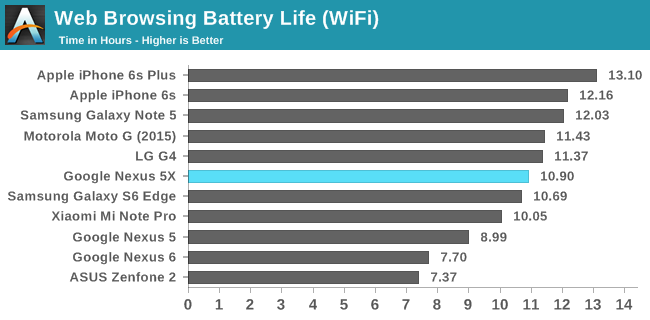
The Nexus 5X does well in our WiFi web browsing test. This is a fairly display-bound test, and if you actually just scale the Nexus 5's battery life by 1.174 which gives you the increase in battery capacity going from the 5 to the 5X you get a result that is only 21 minutes short of the 5X's lifetime in this test. With that in mind, it looks like display and WiFi power usage hasn't changed much from the Nexus 5. 10.9 hours isn't quite as good as what we've seen on some recent flagships and on the Moto G, but I think it's a perfectly respectable result, and it's a good improvement from the Nexus 5 even if it does come mostly from the battery capacity bump.


The Nexus 5X lasts longer than most other devices in BaseMark OS II's battery test. As mentioned in the sustained performance section of the review, the 5X can't really maintain a very high level of performance in this test due to Snapdragon 808's heavy thermal throttling. The battery score ends up being a result of the lower battery drain per unit of time, rather than due to sustaining high performance during the time it was alive like the score for the iPhone 6s. I don't really need to go over the performance situation again, but suffice to say the Nexus 5X should last a good period of time during CPU intensive tasks, but you can't expect the same level of performance as some other devices are providing.
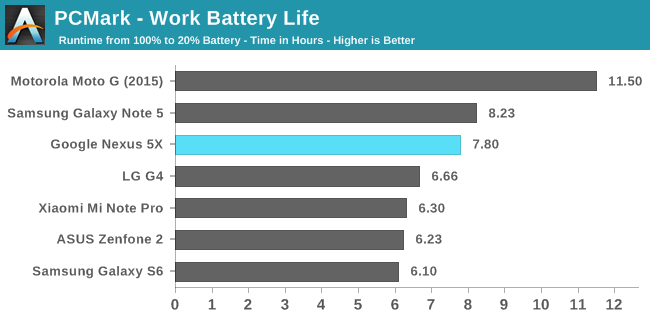
PCMark's battery test gives us a good idea of how long a battery will last in a mixed workload. The benchmark simply runs through all of PCMark's standard tests, which include web browsing, editing documents, playing video, and other tasks that many users perform frequently on their phones. The Nexus 5X does very well in this test, with a battery lifetime that is longer than most other devices, with only the much larger Galaxy Note 5 and the slow but battery packed Moto G lasting longer.
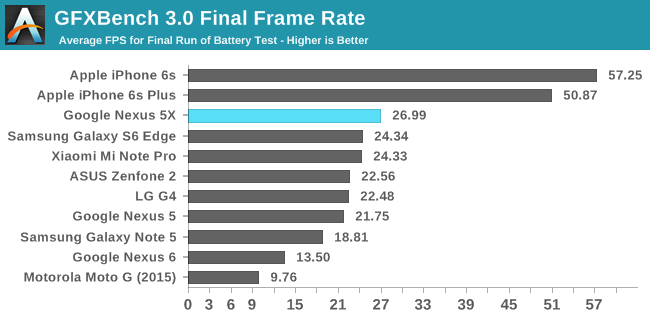
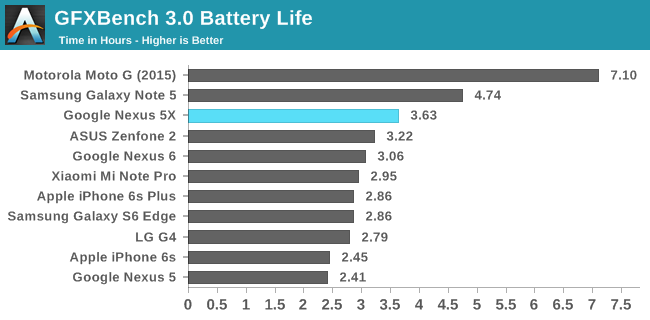
The Nexus 5X again does very well in GFXBench's battery test. There's obviously performance throttling, but during a prolonged GPU workload you'll actually end up getting performance that is competitive with the best Android devices on record. The only thing that I'd like to point out is that the frame rate is still too sinusoidal, which will translate to erratic performance when playing games, It would be good if Google could alter their frequency scaling and find a place between the 23 and 27fps levels that they could stabilize the frame rate at to eliminate this behavior.
Based on the results of all our battery tests I don't think battery life will be an issue for any Nexus 5X user. In my experience the battery life has also been very good, and the new Doze feature in Android Marshmallow seems to be doing its job well because there have been instances where I forget to plug the phone in at night and the battery drain during that time has been minuscule. While battery life may have been an issue with older Nexus devices, I think it's safe to say it's no longer a concern with the Nexus 5X.
Charging
Normally I just measure charge time, but with the Nexus 5X I wanted to talk about the charger itself and clear up some confusion. The Nexus 5X ships with a 15W charging block made by LG, with a newer USB Type-C port instead of a more traditional Type-A port. This means it's really only useful for charging Type-C devices - most users aren't likely to have a C-to-Micro-B cable - and while the Nexus 6P comes with a secondary USB Type-A to Type-C cable, the 5X only comes with a Type-C to Type-C cable. This means that by default you don't really have a way to charge the 5X using older chargers or connect it to a PC unless you buy a separate cable, as Type-C host ports are still rare outside of a handful of laptops and chargers. Obviously in the case of the 5X this is a cost concession, but I think users are going to find the decision quite annoying as a USB Type-A to Type-C cable may not be something you can easily find yet at a local electronics store, and online they're often fairly expensive branded cables.
I was fortunate enough to have various Type-C cables from my Chromebook Pixel review, and so I was able to investigate charging using different chargers. It is true that the Nexus 5X does not support Qualcomm Quick Charge, but I have to reiterate that this has nothing to do with the use of the Type-C connector like I've seen speculated for other devices in the past. Type-C is just a connector, nothing more, and the underlying protocols are still USB 2.0 data coupled with USB Power Delivery 2.0. Supporting Quick Charge has associated licensing and verification costs which add to a device's BOM, and if you're trying to keep costs down it makes sense to support fast charging with your own charger while avoiding incurring those costs by supporting a standard created by another company to accomplish the same thing with other chargers.
As for LG's charger, there's not a whole lot to say as far as the appearance, although you may get some questions about exactly what connector it uses if anyone ever asks to borrow it. Something that I found to be really bothersome is that the charger has a constant high pitched noise whenever you're charging a device, and as the device approaches full charge it gets louder and louder to the point that I've had to start charging the phone in another room. I had the exact same issue with the Motorola Turbo Charger that came with the Nexus 6, and it absolutely amazes me that such a problem continues to exist in shipping products. Eliminating coil whine has a small associated cost, but at $379 you're not playing at a level where that sort of concession is justified. What's worse is that a Nexus 5X owner will have to use the included charger for the foreseeable future, or buy a Type-C to Type-A cord.
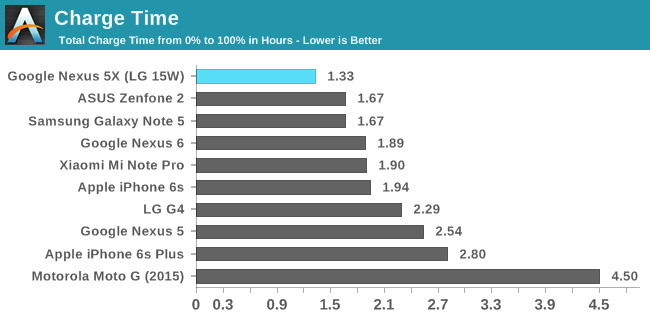
I measured the charge time in three different circumstances with the Nexus 5X. The first was using the included 15W charger, the second was using the Chromebook Pixel's 60W charger, and the third was an ASUS 18W Quick Charge 2.0 charger with a Type-A to Type-C cable. Both the Pixel's and the included LG charger actually took the same amount of time, so it doesn't look like the phone will draw above the 5V 3A output of the included charger. As for the ASUS 18W charger, it also took about 1.33hrs. Even though the phone isn't explicitly advertised as supporting Qualcomm Quick Charge, it will draw above your standard 5W if your charger supports it. 1.33hrs is the best charge time I've seen so far as well, partially owing to the fact that the battery isn't as big as some other larger devices.
One interesting thing that I wanted to mention is that the Nexus 5X uses a Fairchild FUSB301 USB controller which does allow for USB power delivery support. This means you could charge other devices using the Nexus 5X if you really wanted to, and I've confirmed that it works with devices like my camera and headphones, as well as other Android devices. You do need some sort of Type-C to Micro-B cable to make this work in most cases, but it's a cool feature nonetheless. It's important to note that the Nexus 5X is still a USB 2.0 data device, so file transfers are still limited to 480Mbps.
WiFi
While LTE has actually outpaced the speed of local WiFi in many markets, the reality of data caps, throttled usage, and issues with reception means that a smartphone will probably spend a lot of time connected to WiFi. In the case of the Nexus 5X I think having fast WiFi will actually be even more necessary than on other devices, because unless you own a very new Skylake computer, a Chromebook Pixel, or a MacBook, you're probably going to end up transferring your media to it over WiFi until you can source a Type-C to Type-A cable.
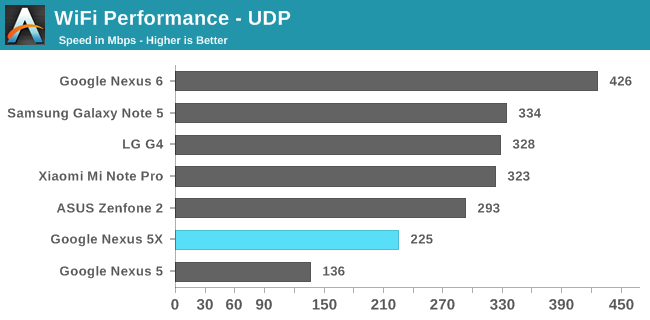
Unfortunately the Nexus 5X's WiFi performance is not very high for a dual spatial stream 802.11ac implementation. The peak UDP data rate was only 225Mbps, which is much lower than I expected. Limited size and space is obviously an issue when arranging the antennas in a smartphone, but ASUS achieved noticeably higher speeds with a single spatial stream implementation in a chassis that isn't that much larger. I don't expect that this is a software bug either, because the phone is registering a maximum theoretical link speed of 866Mbps.


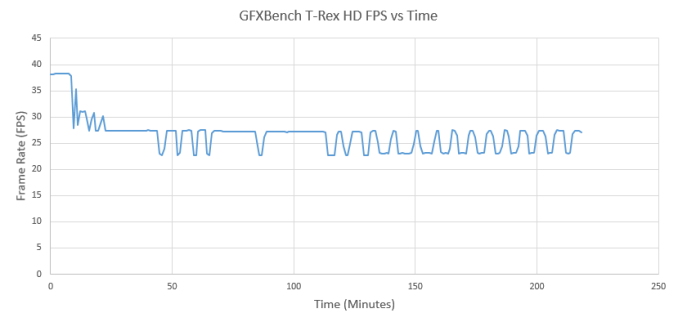
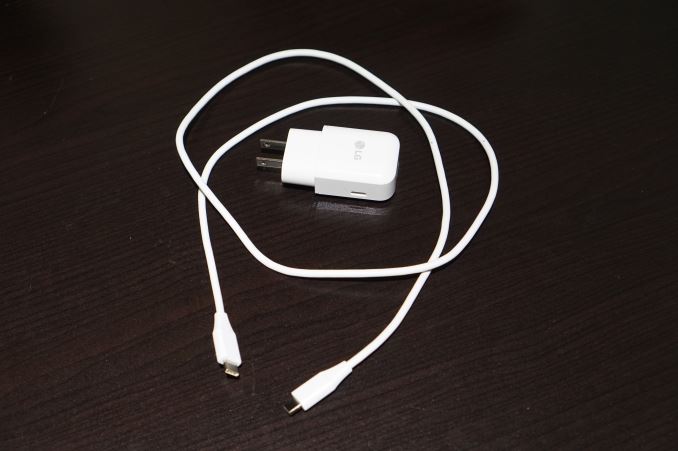
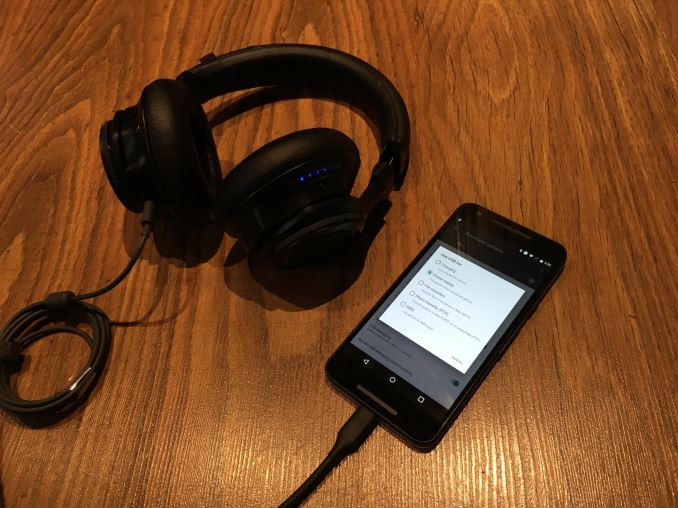








197 Comments
View All Comments
kspirit - Monday, November 9, 2015 - link
Really impatiently waiting for an AT review of Moto X. It's either this or Moto X for me and I will *not* buy until I've got two AT reviews to compare.hans_ober - Monday, November 9, 2015 - link
I'd go with the 5X :)Main 'Nexus' concerns I've always had were camera and battery - which google has sorted out this time with the 5X.
3DoubleD - Monday, November 9, 2015 - link
Thankfully, I did not wait for Anandtech to review the Moto X Play, I just bought it.While I can't offer nearly the review dept of Anandtech, it is plenty fast for everything I've used it for (3D games, multitasking, browsing, ect.). It is a great phone. Similar price the the Nexus (although anecdote-ally, mine was cheaper at $399 - $50 Visa card - value of a 2nd Quick Charge charger - plus I didn't have to pay up front). The battery life is just unparalleled. Display looks great in all conditions. Good hand feel, but I got a case because I'm reckless sometimes. Call quality is excellent. Front speaker is plenty loud. Camera is OK, good in light, passable in low light. Motorola updates Android slightly slower than the Nexus phones, but barely. Android is stock. Has an microSD slot. Wifi reception is great in my experience. Does NOT have a notification LED, but has the low power on screen notification system that works fine (although deep down I slightly miss the LED).
Mainly, compared to the Nexus 5X you are sacrificing the slightest amount of real world SoC performance for more battery life and an SD card slot. The screen on the Moto X Play is also slightly bigger. Either way, you'd probably be happy.
3DoubleD - Monday, November 9, 2015 - link
I should add that you also forgo the fingerprint scanner with the Moto X Play versus the Nexus 5X. The importance of this feature depends whether you think mobile phone payment will catch on where you live. I would be incredibly surprised if it was widely adopted where I live (Canada) over the next 2 years.Bob Todd - Monday, November 9, 2015 - link
The fingerprint scanner becomes a sanity saving mechanism when you have unlocked your gadget for the billionth time and realize you are totally sick of doing so. Why would you think it is only important to payments? Integration with password software is also huge. I logged into this site with my fingerprint...erple2 - Monday, November 9, 2015 - link
This! I think that the fingerprint sensor is going to become a defacto replacement for entering your password in to your phone (for better or worse), but I'm all for it. Entering a 15 digit password with upper/lower case, numbers and special characters is a pain on a smartphone. If that can be circumvented with the (admittedly great) fingerprint sensor (I have a 5X), then I'm all for it.Bob Todd - Monday, November 9, 2015 - link
Most people that think they aren't a big deal usually haven't gotten to use a good one for any extended amount of time. I had one of the first Android devices with a fingerprint sensor (Motorola Atrix). That sensor was garbage compared to what's available today and I wouldn't pay an extra penny to have one like that included on a phone. Sensors like what Apple has been putting out or what's in these Nexus devices? They are absolutely one of the biggest changes to the entire user experience for anyone who is on their phone for whatever reason throughout the day. I'd easily pay over $100 just for a good fingerprint sensor. I contemplated a Moto X Pure but just couldn't do it because of that omission alone. My work phones were iPhones, and when I got my iPhone 6 it made me loathe anything on my personal phone that required a PIN or password. I could never go back to a phone without some kind of streamlined biometric login.twizzlebizzle22 - Monday, November 9, 2015 - link
Not sure on the test but my Nexus 6P NAND seems pretty quick when running androbench. Even for an encrypted device.Glock24 - Monday, November 9, 2015 - link
It does not seem like a good value, especially considering the limited storage options and no SD slot. 2GB RAM seem limited too.Bob Todd - Monday, November 9, 2015 - link
I think the biggest problem with this phone is that it doesn't seem like a good value compared to the 6P. Google made it really hard to choose the 5X.The "small" Nexus is still large at 5.2". They need more than half an inch separating the phones. This one should have been 4.7".
There's only a $70 difference for equivalent capacities. Which is really about $60 when you realize the 5X doesn't come with an A-> C cable but the 6P does.
The 6P has great front facing stereo speakers. The 6P has a more capable camera system (e.g. burst and 240fps slow motion). The 6P has a premium build. The 6P has 3GB of RAM. The 6P has a higher resolution display (I think over 1080p is overkill on a phone, but it impacts the BOM). The 6P has the (theoretically) better SOC. The list goes on.
You are giving up a lot for a small price advantage, at least based on US prices. If the "small" Nexus was actually reasonably compact I think it would fill a more important niche. With both being big ass phones, the decision to go for the 6P was easy to make.